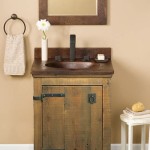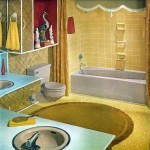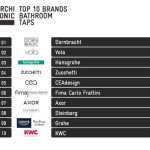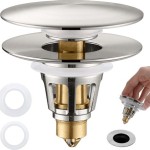Is There Any Difference Between Kitchen And Bathroom Paint Colors?
Choosing the right paint color can dramatically impact the ambiance of any room. While aesthetics play a significant role, practical considerations often dictate the type of paint used, particularly in moisture-prone areas like kitchens and bathrooms. This article explores the key differences and similarities between paint choices for these two essential spaces.
Key Differences Between Kitchen and Bathroom Paints
The primary difference between paints suitable for kitchens and bathrooms lies in their resistance to moisture and mildew. Bathrooms, being consistently exposed to high humidity from showers and baths, require paint specifically formulated to withstand these conditions. Kitchens, while experiencing less intense and consistent humidity, are still prone to moisture from cooking steam, spills, and splashes.
Moisture Resistance: A Critical Factor
Bathrooms demand paint with exceptional moisture resistance. Mold and mildew thrive in damp environments, making a mildew-resistant paint crucial. These paints typically contain additives that inhibit the growth of these microorganisms, preserving the paint's integrity and ensuring a healthier environment.
Durability and Cleanability
Both kitchens and bathrooms experience frequent cleaning. Kitchen walls may encounter grease splatters, food stains, and fingerprints, while bathroom walls face soap scum, toothpaste residue, and watermarks. A durable, washable paint is therefore essential for both spaces, allowing for easy cleaning without compromising the paint finish.
Sheen Level Considerations
The sheen level of a paint refers to its reflectivity and impacts its durability and cleanability. Higher sheen paints, like satin or semi-gloss, are more resistant to moisture and easier to clean, making them popular choices for kitchens and bathrooms. However, they can also highlight imperfections on the wall surface. Matte finishes offer a more forgiving look but may not be as durable or scrubbable.
Paint Formulation: Primer and Additives
While many modern paints offer combined primer and paint functionalities, dedicated primers can enhance performance, particularly in challenging environments. A moisture-resistant primer applied before the topcoat can further protect against mildew and enhance the longevity of the paint finish. Some paint manufacturers also offer specialized bathroom paints with added antimicrobial agents for enhanced protection against mold and mildew.
Color Selection: Aesthetics and Practicality
While functionality is paramount, aesthetics also hold significance. Light, bright colors are often favored in bathrooms to create a sense of spaciousness and cleanliness. Kitchens offer greater flexibility in color choices, ranging from warm neutrals to bolder hues. However, regardless of the room, considering the impact of lighting and the existing décor is crucial when selecting a paint color.
Ventilation: A Supporting Factor
Proper ventilation plays a crucial role in maintaining the integrity of paint in both kitchens and bathrooms. Adequate ventilation helps control humidity levels, minimizing the risk of condensation and subsequent mildew growth. Exhaust fans should be used regularly, especially during and after showering or cooking.
Cost Considerations
Specialty paints formulated for bathrooms with added mildew resistance may be slightly more expensive than standard interior paints. However, the added cost is often justified by the enhanced durability and longevity they offer, reducing the need for frequent repainting.
Surface Preparation: The Foundation for Success
Proper surface preparation is essential for any painting project, regardless of the room. Cleaning the walls thoroughly to remove dirt, grease, and mildew before painting ensures proper adhesion and a uniform finish. Repairing any cracks or imperfections also contributes to a professional-looking result.
Choosing the Right Paint for the Job
Ultimately, the best paint for a kitchen or bathroom depends on the specific conditions of the space. Factors such as humidity levels, frequency of cleaning, and aesthetic preferences should all be considered. Consulting with a paint specialist can provide valuable guidance in selecting the most appropriate product for individual needs.
Beyond Paint: Additional Considerations
While paint plays a vital role in protecting walls, other factors contribute to a healthy and aesthetically pleasing environment. Regularly cleaning and maintaining proper ventilation are crucial for preventing mildew growth and ensuring the longevity of any paint finish. These practices, combined with the correct paint choice, create a harmonious balance between functionality and beauty in kitchens and bathrooms.

Kitchen And Bathroom Paint 8 Tips To Getting It Right

Choosing Bathroom Paint Colors For Walls And Cabinets

Dulux Bathroom Paint Colours

Best Paint Colors For Kitchen Cabinets And Bathroom Vanities

Dulux Bathroom Paint Colours

Best Type Of Paint For Bathrooms 2024 Guide Forbes Home

30 Best Bathroom Paint Colors 2024 Ideas

What Color Should I Paint My Bathroom 3 Tips For Picking The Perfect Elite Painting Kc

The Truth About Bathroom Paint Kitchen Bath Renovation

Bathroom Paint Colors Every Shade You Should Consider Décor Aid
Related Posts







